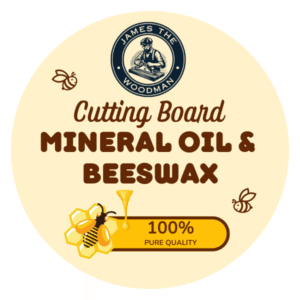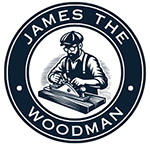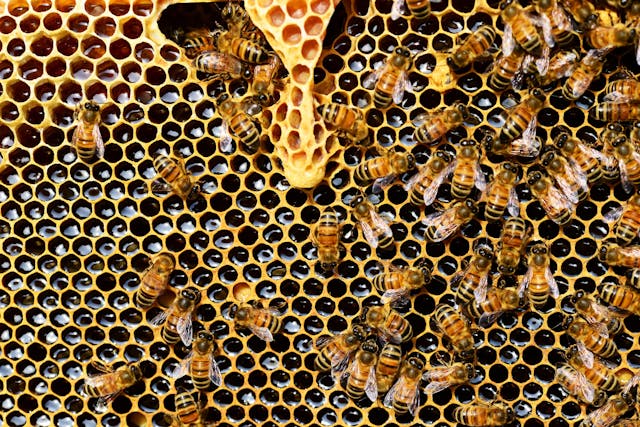Wooden cutting boards are a timeless and practical addition to any kitchen. They are durable, naturally antimicrobial, and often more gentle on knife edges compared to plastic alternatives. However, without proper care, wooden boards can warp, crack, or absorb moisture and odors over time. One of the most effective ways to preserve and extend the life of a wooden cutting board is by treating it with beeswax. This natural product has been used for centuries to protect wood surfaces, and it remains a reliable, safe, and eco-friendly method today.

In this article, we will explore how beeswax works, why it is beneficial for wooden cutting boards, how to apply it, and the long-term advantages of incorporating it into your regular kitchen maintenance routine.
The Importance of Maintaining Wooden Cutting Boards
Wooden cutting boards are different from synthetic ones in that they are porous and responsive to environmental changes. When exposed to water, heat, or inconsistent humidity, the wood fibers expand and contract. Over time, this can lead to splitting, warping, or an uneven surface. Additionally, wooden boards can absorb food particles and liquids if left untreated, which may cause unpleasant odors or bacterial growth.
Proper maintenance prevents these issues. Regular oiling and waxing provide a barrier that keeps moisture out and preserves the natural integrity of the wood. Among the many options available, beeswax stands out because of its unique properties and long history of use.
What Makes Beeswax Effective for Wood Protection
Beeswax is a natural substance produced by honeybees. It is secreted from glands on their bodies and used to build the honeycomb structure within hives. When harvested responsibly, beeswax is renewable and sustainable, making it an appealing option for eco-conscious households.
For wood care, beeswax is particularly effective because of its composition. It is naturally water-resistant, which means it can help prevent liquids from soaking into the cutting board. Unlike synthetic sealants, beeswax does not create a hard, impenetrable layer; instead, it penetrates the wood fibers to provide flexible protection. This allows the board to breathe while still repelling moisture.
Beeswax also adds a subtle sheen and enhances the natural grain of the wood. This not only improves the board’s appearance but also helps maintain its smooth texture.
Combining Beeswax with Mineral Oil
While beeswax on its own provides excellent protection, it is often combined with food-grade mineral oil to create a conditioning balm. Mineral oil penetrates deeply into the wood, hydrating the fibers and preventing them from drying out. Beeswax, in turn, seals in that moisture and adds a water-resistant barrier on the surface.
The combination is ideal for cutting boards because it protects against both internal dryness and external moisture. Many commercial wood conditioners rely on this blend, and it is also easy to make at home with a simple recipe.
How to Apply Beeswax to a Cutting Board
Applying beeswax to a wooden cutting board is a straightforward process that does not require specialized tools. Here are the steps for effective application:
- Clean the Board Thoroughly – Wash the cutting board with mild soap and warm water, then dry it completely. Never soak a wooden board or put it in the dishwasher, as this can cause damage.
- Warm the Wax or Conditioner – If using a beeswax and mineral oil blend, gently warm the mixture until it is soft and easy to spread. Many ready-made conditioners are already smooth enough for direct application.
- Apply Evenly – Using a clean cloth or paper towel, rub the beeswax mixture into the surface of the board in circular motions. Make sure to cover both sides and the edges, as all areas of the board are exposed to moisture.
- Allow Time to Absorb – Let the board rest for several hours, or ideally overnight, so the wax can fully penetrate the wood fibers.
- Buff the Surface – After the resting period, use a clean dry cloth to buff off any excess wax. This step creates a smooth, polished finish.
Repeating this process once every few weeks, depending on usage, keeps the board in optimal condition.
Benefits of Using Beeswax on Cutting Boards
The regular use of beeswax offers several key benefits:
- Moisture Resistance – Beeswax prevents water and other liquids from soaking into the wood, reducing the risk of warping or cracking.
- Enhanced Durability – Treated boards resist wear and tear, extending their lifespan.
- Natural Antimicrobial Qualities – While beeswax itself does not kill bacteria, by preventing liquid absorption, it minimizes bacterial growth inside the wood.
- Improved Aesthetic Appeal – Beeswax enhances the natural wood grain, giving the board a rich and well-maintained appearance.
- Food-Safe Protection – Beeswax is safe for contact with food when harvested and processed correctly, making it a suitable choice for kitchenware.
Environmental and Health Considerations
Choosing beeswax over synthetic alternatives aligns with sustainable living practices. It is biodegradable, renewable, and harvested in a way that supports beekeeping, which is vital for pollination and agriculture. Unlike some chemical finishes, beeswax does not release harmful substances, ensuring that food preparation surfaces remain safe for everyday use.
Additionally, using natural products like beeswax can reduce exposure to unnecessary chemicals in the kitchen. For families seeking eco-friendly and health-conscious solutions, beeswax offers peace of mind.
Long-Term Maintenance Tips
While beeswax provides excellent protection, it is only one part of proper cutting board care. Other best practices include:
- Avoiding Excessive Moisture – Never leave wooden boards soaking in water or exposed to high humidity for prolonged periods.
- Regular Cleaning – Wipe down with warm water and mild soap after each use, followed by immediate drying.
- Routine Conditioning – Reapply beeswax or a beeswax blend regularly to maintain protection.
- Rotating Use – If you own multiple boards, alternate them to reduce wear on any single one.
By combining these practices with beeswax conditioning, wooden cutting boards can last for many years while retaining both function and beauty.
Conclusion: Beeswax as a Natural Protector
Wooden cutting boards bring warmth and utility to any kitchen, but they require care to remain durable and safe. Beeswax offers a natural, effective, and environmentally responsible way to protect these boards from damage. Its ability to repel moisture, preserve wood fibers, and enhance appearance makes it a valuable addition to routine kitchen maintenance.
By incorporating beeswax treatment into regular care, households can ensure their cutting boards remain reliable tools for meal preparation while also maintaining their aesthetic appeal. In the long run, this simple step not only extends the life of the board but also supports sustainable practices by relying on a natural product with a proven history of effectiveness.

